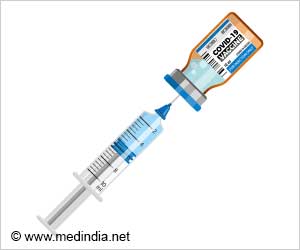Study shows that in patients with atrial fibrillation, co-administration of certain drugs with non-vitamin K anticoagulants lead to increase in major bleeding.
Concurrent use of some widely prescribed meds along with non-vitamin K oral anticoagulants (NOAC) or blood-thinners in pateints with artrial fibrillation was associated with high risk of major bleeding. The finding was based on studies on participants of Asian ethnicity and is published in
JAMA.
Oral anticoagulation has been proven to prevent ischemic strokes and prolong life for patients with atrial fibrillation. Non-vitamin K oral anticoagulants (NOACs) are being used more frequently because of their ease of administration and comparative efficacy compared with warfarin in reducing blood clots and major bleeding. However, for patients with atrial fibrillation, NOACs are often prescribed with other medications that share metabolic pathways that may increase major bleeding risk.
TOP INSIGHT
Concurrent use of amiodarone, fluconazole, rifampin, and phenytoin with NOACs increases incidences of major bleeding than use of NOACs alone.
Chang-Fu Kuo, M.D., Ph.D., of Chang Gung Memorial Hospital, Taoyuan, Taiwan, and colleagues used data from the Taiwan National Health Insurance database and included 91,330 patients with nonvalvular atrial fibrillation who received at least one NOAC prescription of dabigatran, rivaroxaban, or apixaban and estimated the bleeding risk associated with or without the concurrent use of 12 commonly prescribed medications that share metabolic pathways with NOACs (atorvastatin; digoxin; verapamil; diltiazem; amiodarone; fluconazole; ketoconazole, itraconazole, voriconazole, or posaconazole; cyclosporine; erythromycin or clarithromycin; dronedarone; rifampin; or phenytoin).
Major Bleeding Risk with different Concurrently Used Medications
Among the patients in the study, 4,770 major bleeding events occurred. The researchers found that concurrent use of amiodarone, fluconazole, rifampin, and phenytoin with NOACs had a significant increase in incidence rates of major bleeding than NOACs alone. Compared with NOAC use alone, the incidence rate for major bleeding was significantly lower for concurrent use of atorvastatin, digoxin, and erythromycin or clarithromycin and was not significantly different for concurrent use of verapamil; diltiazem; cyclosporine; ketoconazole, itraconazole, voriconazole, or posaconazole; and dronedarone.
The study notes some limitations, including that bleeding risk and anticoagulant treatment in the Asian population have been recognized to be different from the Western population. Therefore, the external generalizability of these results, particularly to a Western population may be limited.
"Physicians prescribing NOAC medications should consider the potential risks associated with concomitant use of other drugs," the authors write.
Source-Eurekalert

 MEDINDIA
MEDINDIA




 Email
Email






